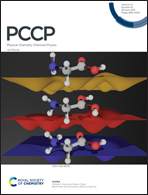Improved ionic conductivity for amide-containing electrolytes by tuning intermolecular interaction: the effect of branched side-chains with cyanoethoxy groups†
Abstract
Polymeric materials are considered as promising electrolytes for all-solid-state secondary lithium batteries with superior energy and power densities, long cycle lives, and high safety. To further improve the ionic conductivity of polymer electrolytes, the development of a simple and efficient method that enables precise tuning of the three key factors, polymer segmental dynamics, Li+ coordination structure, and salt dissociability, is desired. In this study, we focus on an amidation reaction, which is a simple reaction with broad applicability, to explore the impact of the side-chain structure on the intermolecular interactions within the polymer, which dictates the aforementioned key factors. We synthesized a series of polyoxetane-based polymers having different branched side-chains, i.e., methyl (PtBuOA) and bulky cyanoethoxy (P3CEOA) groups, via amidation reaction. Spectro(electro)chemical analysis verified that the large steric hindrance of the cyanoethoxy side-chain effectively breaks the hydrogen bond network and dipole interaction within the polymer, both of which decrease the polymer segmental mobility, leading to better long-range Li+ conduction. Furthermore, the unique Li+ coordination structure consisting of a cyano group, ether/carboxyl oxygen, and TFSA anion in P3CEOA electrolytes has moderate stability, which effectively promotes the short-range Li+ conduction. The amide group, with a relatively high dielectric constant, improves the dissociability of lithium salt. We confirmed a more than three orders of magnitude improvement in ionic conductivity by introducing the cyanoethoxy side-chain, than that obtained by introducing the PtBuOA electrolyte with a methyl side-chain. This work provides a holistic picture of the effect of the side-chain structure on the intermolecular interaction and establishes the new design strategy for polymer electrolytes, which enables the precise tuning of the molecular interaction using the side-chain structure.



 Please wait while we load your content...
Please wait while we load your content...